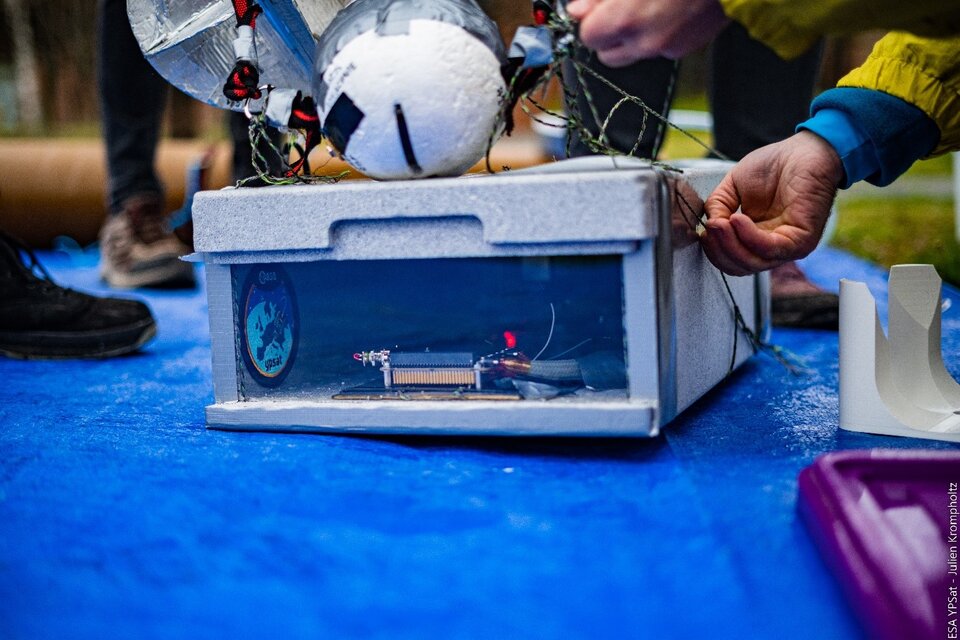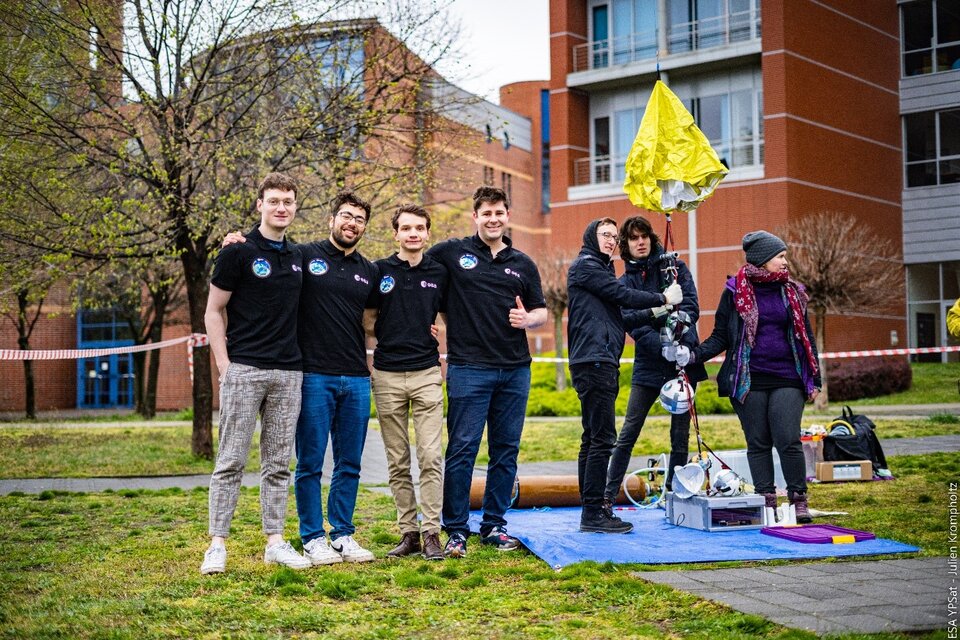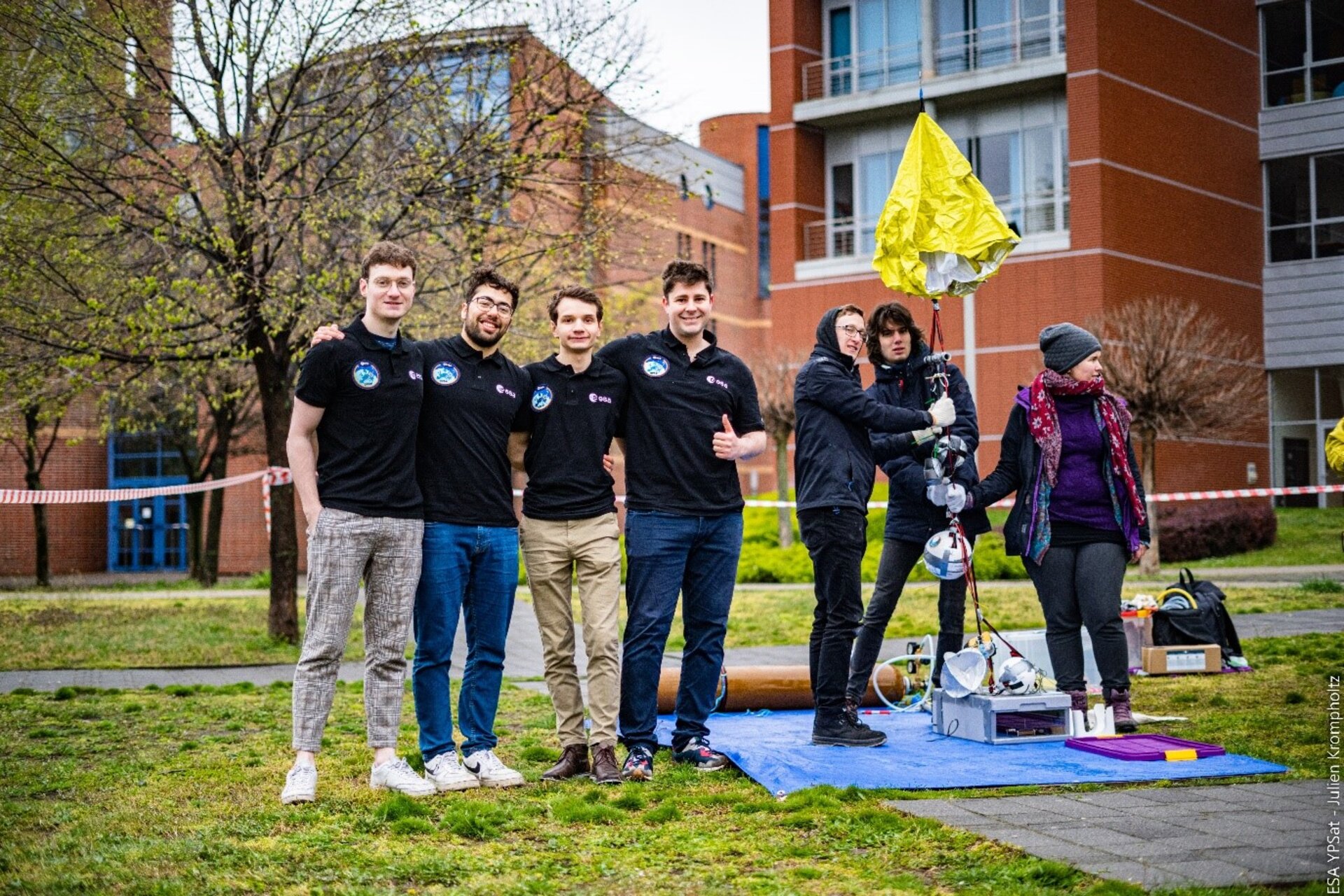YPSat Wake-Up-System takes flight in Hungary
Members of ESA’s Young Professional Satellite (YPSat) team travelled to Budapest, Hungary in April to test the payload’s Wake-Up-System (WUS) on-board a high-altitude balloon platform provided by UPRA (Universal Platform for Robotics and Aerospace). The WUS is a unique component which activates the YPSAT systems following a successful launch and triggers the imaging upon Ariane 6 fairing separation.

The YPSat WUS is a key system, designed, assembled, and tested in-house by the YPSat team, which will detect a successful launch and activate all systems on-board YPSAT, including triggering the imaging of the fairing separation of Ariane 6 at the correct time. The WUS will allow the YPSat to remain in hibernation during the loading and pre-launch stages and conserve battery power.
The functionality of the WUS is critical to the success of the YPSat mission, and the high-altitude balloon test is one of a series of rigorous tests applied to each component of the payload to ensure the systems will perform as expected during the mission.

For this test, the YPSAT team together with the UPRA team travelled to the launch site in Budapest, Hungary, where the WUS was mounted on the UPRA high-altitude balloon platform, alongside a 360 degree camera and other recording equipment. Once released, the balloon climbed to the stratosphere, reaching an impressive altitude of 33 500 meters at the highest point of its journey. The video recording on-board the UPRA high altitude balloon during the WUS test can be found here.
The test successfully met the team’s objectives of assessing the functionality and reliability of the WUS sensors and provide insightful data into future testing and the ideal configuration of the WUS trigger parameters for the YPSAT system activation upon launch. The payload was recovered after returning to Earth and the YPSAT team is currently collecting and processing the data.
The YPSAT team would like to thank the UPRA team supporting and recognise the hard-work and dedication of the YPSAT WUS team members: Remy Chatel, Vegard Vaglid (HIF-IAC), Timotheos Savva (TEC-EFW), Clement Puybareau (TEC -QQS) and Julien Krompholtz (TEC-QQM).


